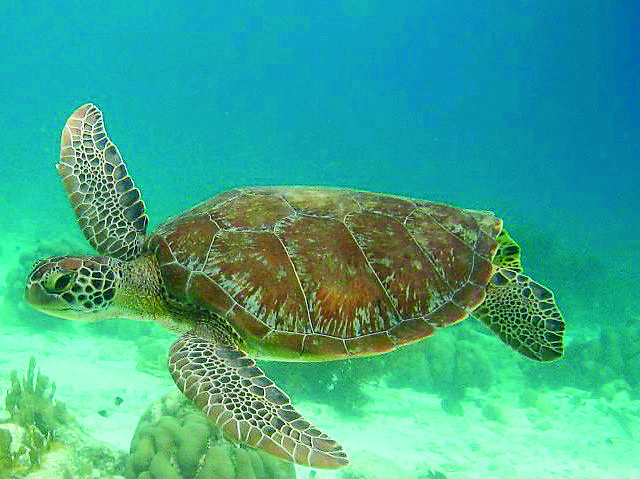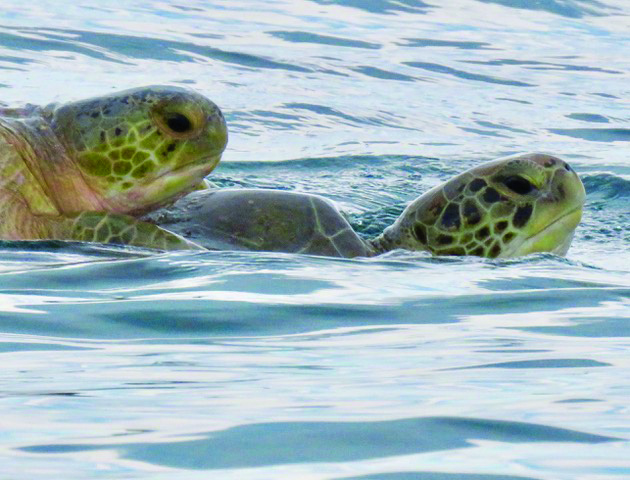By Capt. Chris Thalmann Contributing Writer
Hello everyone!
Here we are in the middle of another South Florida summer. Seas have flattened and it’s a great time of year to spot sea turtles on the ocean! In fact, it’s nearly impossible to be on local waters this time of year and NOT see a sea turtle.
In 2019 almost 42,000 sea turtle nests were recorded along Palm Beach County’s ocean beaches between March and October. Roughly half of those nests were located along just 10 miles of north county beaches. These are some of the most densely-nested beaches in the world with lea herback, loggerhead and green sea turtles. Loggerheads are by far the most common nesters, followed by greens and then the massive leatherbacks, who often measure more than 5 feet long and can weigh upwards of 1,000 lbs! That’s a lot of turtle!
It’s too early to tell how the 2020 turtle nesting season will turn out, but things look promising. Especially for leatherbacks, who tend to wind up their nesting season in early summer. Nearly 300 leatherback nests have been recorded in Palm Beach County so far this year. PBC nests often represents 40-50% of leatherback nests throughout Florida each year, so each leatherback nest is – very literally – a big deal!
As unforgettable as the giant leatherbacks are to see, they’re also pretty rare compared to greens and loggerheads. The latter two species produce tens of thousands of nests locally each year and are by far the species seen most often locally.
I’m sometimes asked how best to actually see turtles in the wild. My advice is pretty easy:
1 – Be patient. These animals have been around for hundreds of millions of years. They know their job and how best to go about it. Being in a big hurry to find them won’t make it happen any faster. Just be patient.
2 – Slow down – especially between Lake Worth Inlet and Jupiter Inlet. Idle speed isn’t necessary but the slower you go the more turtles you’ll see.
3 – If you can safely shut down your motor(s) when you spot turtles, do it. Sea turtles can hearsome sounds, especially underwater, so blending into the background noise of the ocean is a good thing.
4 – Have someone in the bow or up in the tower looking for turtles directly ahead of your boat. Many turtles pop up for air just ahead of boats, get frightened and then immediately dive right back down. Having just one person looking straight ahead makes spotting so much easier. It’s safer for the turtles too!
If you and your family would like to join us for an offshore turtle trip this season, e-mail us at info@aquaadventuretours.com for reservations. Several trips will be led by wildlife biologists and a portion of the proceeds from these trips will help support sea turtle conservation work here in South Florida.
Captain Chris Thalmann
Owner | Aqua Adventure Tours, Inc.
aquaadventuretours.com



